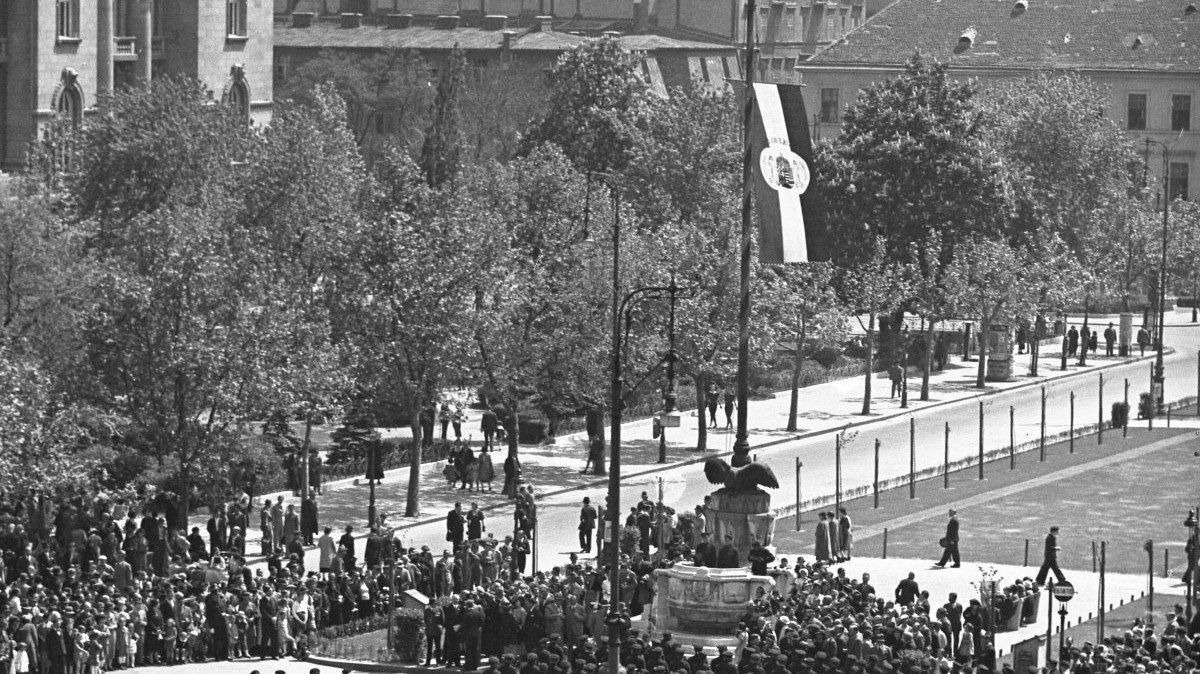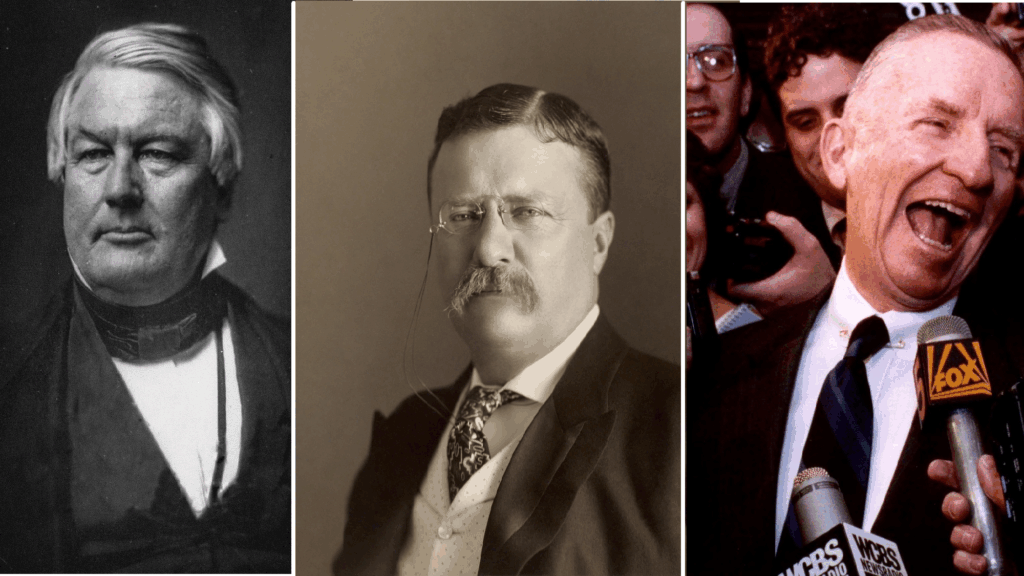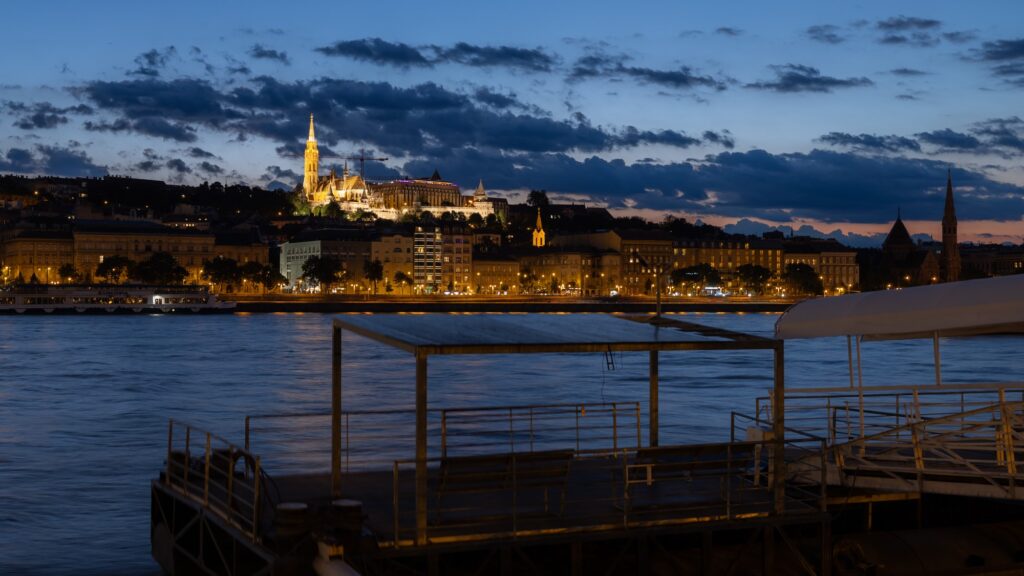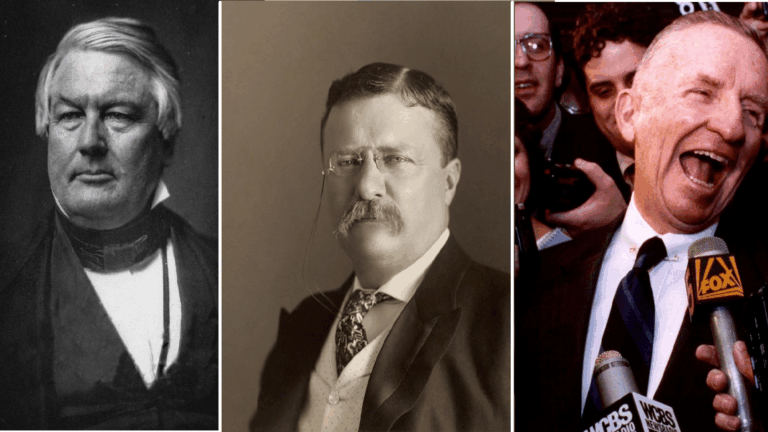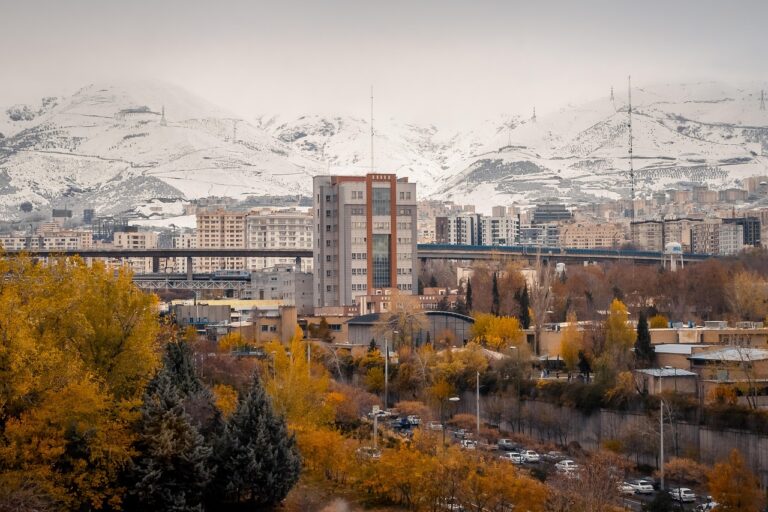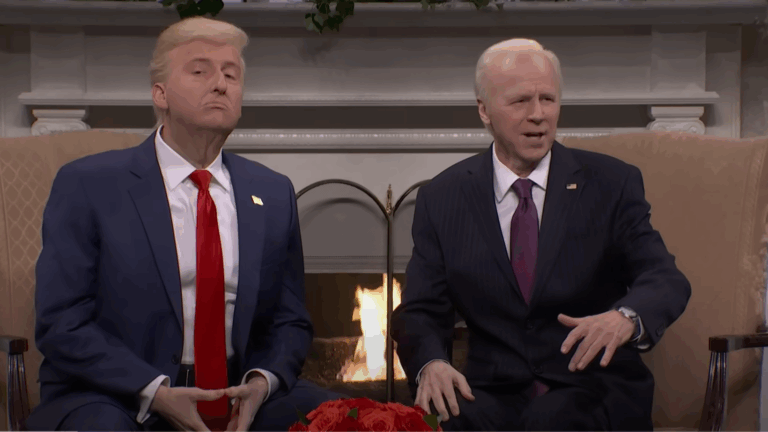‘The Hungarian flag is a symbol, a tangible expression of the idea of the Hungarian state. The fate of our flag is identical to the fate of the Hungarian state. The Hungarian flag has been banished from the occupied castles, and even treated as a criminal symbol. In the Hungarian flag, therefore, we see and respect the Hungarian Empire as a tangible symbol. The National Flag means even more than that—it is not only a symbol of Hungarian national identity, but also the new combative instrument and symbol of a determined and unswerving struggle to reclaim all the peoples and every bit of land of the empire of St Stephen and to reunite them under the thousand-year-old Hungarian Empire.’
– Dr Endre Farkas, Hungarian World War II Major General
Following Hungary’s defeat in the First World War, the victors’ intentions were clear concerning our country:
to impose punishments that would result, if not in the short term but in the long term, in the total disappearance of the former Central European superpower.
The hopeless situation of our country was reinforced not only by the territorial mutilations and the obligations imposed on us by the peace treaty but also by the economic and psychological ruin and the murders committed as a result of the communist dictatorship of 1919 and the subsequent Romanian occupation. In this difficult situation, ideas and actions were needed to help the Hungarian population, which had reached a spiritual low point, to return to the path of healing and restoration.
The pain caused by Trianon and the desire to do something about it prompted Nándor Urmánczy, the ‘uncompromising Hungarian’ and a member of parliament of Transylvanian origin, to initiate and announce the National Flag Movement in 1925. Urmánczy had an inestimable merit in the birth and unveiling of the irredentist statues[1] erected in Budapest’s Szabadság Square in 1921. In his speech at the dedication ceremony, the Transylvanian politician said: ‘They have stolen our forests, our mountains, not even enough boards for a coffin left, they have stolen all our treasures, all the means of life of our country. In this cage, the total ruin of state and society awaits us, unless a strong hand comes soon to force us to unite all our efforts, all our remaining strength, to recover our country as soon as possible.’
It is no coincidence, therefore, that the National Defence Party was established in 1925 as the successor of the Association of Defenders’ Leagues under the leadership of Nándor Urmánczy, and that the so-called ‘Relic National Flag’, which was to be erected by the Committee for the Exposition of the National Flag as a body of the Hungarian Federation, was also placed in Szabadság Square. The plan was ‘to erect a monument which, with the flag at half-mast, would constantly proclaim the idea of Hungarian unity and resurrection, but at the same time would remind us of the territories and our separated blood’.[2] As a relic, a clod of earth was brought from each settlement of the shattered homeland and from the localities of the lost regions, which were placed in the reliquary of the monument. On the lid of the reliquary, the following inscription was placed: ‘Know, oh man, that in this place you stand on the land of Great Hungary, sanctified with blood, tears, and sweat.’
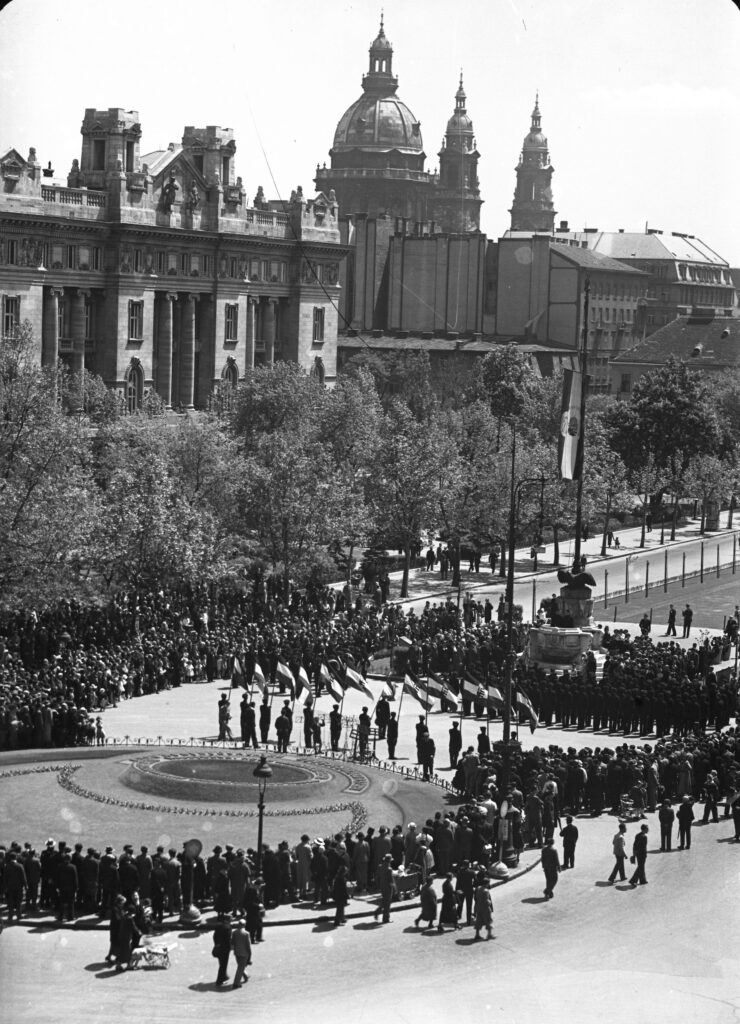
The dedication took place on St Stephen’s Day, 20 August 1928, with a flower bed in front of the National Flag in Szabadság Square, in which a geographical map of the historic Trianon country and the ‘National Apostles’ Creed’[3] were displayed with flowers. The flag featured a shielded coat of arms surrounded by angels and a hand raised in oath at the top of the flagpole. The flag was lowered back to half-mast and remained so for the entirety of the monument’s existence.[4] It was an expression of protest against the Treaty of Trianon and of never renouncing Greater Hungary.
Two years after the inauguration of the memorial on Szabadság Square, a teacher from Tarcal, namely Ferenc Molnár, suggested that other Hungarian municipalities should also follow the example of Budapest and erect a national flag, which should be raised on every holiday and then lowered to half-mast as a symbol of the mourning of Trianon. This is how flag-raising became a national movement. But what were the ‘compulsory accessories’ of the flags? The last official middle coat of arms before Trianon, usually decorated with angels, could not be left out, and the motto ‘So it was, so it shall be’ had to be either on the flag or on the base. The mast was often painted in red, white, and green stripes. In many places, the top was decorated with a hand raised in oath, a turul bird (the mythical eagle of the ancient Hungarians), a double cross, or a Trianon cross. There were also often ornate steps leading up to the pedestal.
Between the two world wars in Hungary every ‘self-respecting’ municipality had its own national flag, so that in the decade and a half that passed, there were about a thousand flags erected in different settlements.
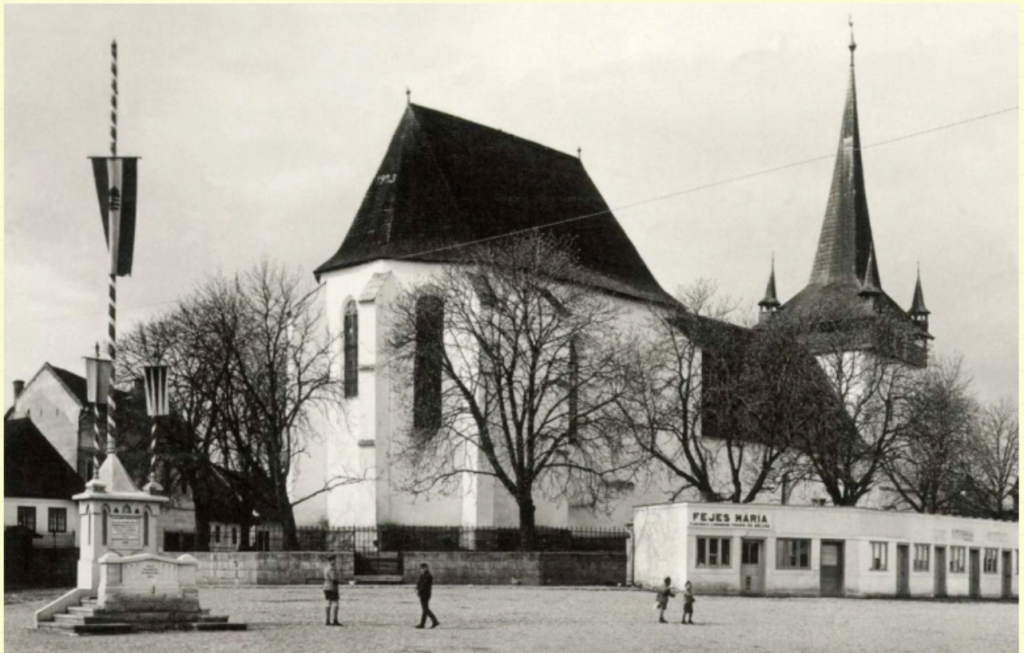
The number of ‘Relic National Flags’ in the countryside was relatively small compared to the number of national flags erected—for them, the earth was taken from the monuments in Budapest. The hundredth national flag was inaugurated in Sátoraljaújhely, a town torn in half by the Treaty of Trianon, on 1 July 1934, as the first element of the Hungarian Calvary historical monument ensemble.
The Soviet invasion after the Second World War also meant that the fate of the national flags was sealed. Most of them had already fallen victim to ‘barbarism’ by 1949, and the few that remained were destroyed by the measures taken in retaliation for the 1956 Revolution. However,
fortunately, the process of restoring national flags gained momentum after the regime change,
and after 1990 hundreds of national flags were restored both in the shattered mother country and in the territories beyond its borders.
[1] A group of statues representing the seceded parts of the country, unveiled on 16 January 1921 on the traffic islands of the northern semicircular part of Szabadság Square. The group of sculptures was created by Ferenc Sidló, Zsigmond Kisfaludi Strobl, János Pásztor, and István Szentgyörgyi.
[2] In 1920, the Association of Defenders’ Leagues, founded under the leadership of Nándor Urmánczy, announced a competition for the creation of a short prayer or sigh of national unity, the winner being the poem ‘Confession’, or the ‘National Apostles’ Creed’ by Mrs Szeréna Sziklay Papp-Váry. The lines of the winning entry were: ‘I believe in one God, I believe in one country,/ I believe in one divine eternal truth,/ I believe in the resurrection of Hungary.’
[3] In 1920, the Association of Defenders’ Leagues, founded under the leadership of Nándor Urmánczy, announced a competition for the creation of a short prayer or sigh of national unity, the winner being the poem ‘Confession’, or the ‘National Apostles’ Creed’ by Mrs Szeréna Sziklay Papp-Váry. The lines of the winning entry were: ‘I believe in one God, I believe in one country,/ I believe in one divine eternal truth,/ I believe in the resurrection of Hungary.’
[4] The flag was only fully raised to the top of the mast for a week at a time during the territorial expansion of 1938–1941.
Related articles:

